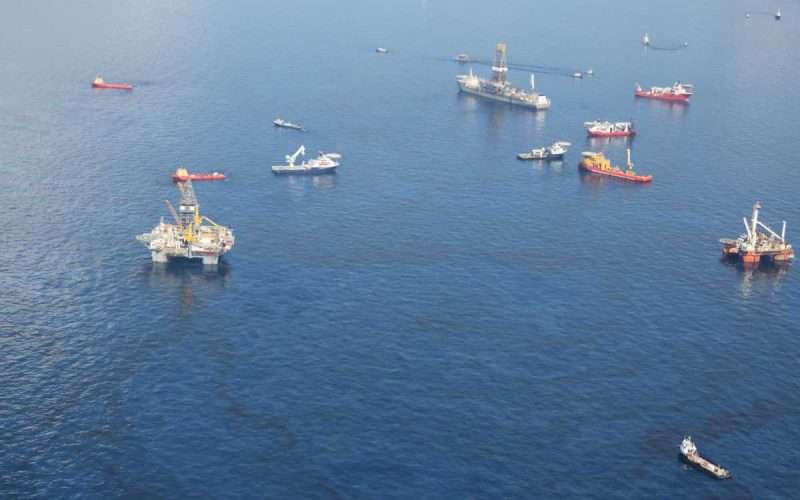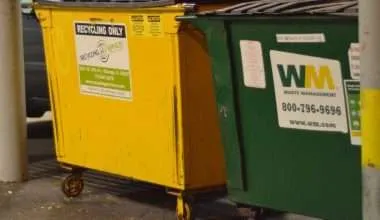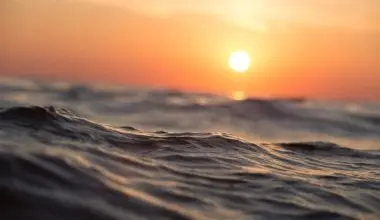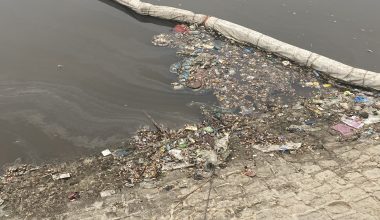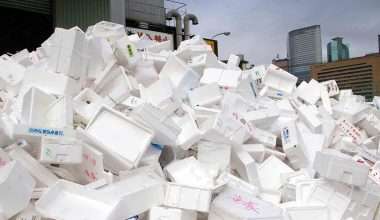Table of Contents Show
The Spill
The Deepwater Horizon was an oil drilling rig operated by BP in Macondo Prospect in the Gulf of Mexico. On April 20, 2010, it exploded and sank resulting in the death of 11 workers on the rig. The tragedy also caused the largest oil spill in the history of the petroleum business.
An estimated 4.9 million barrels of oil flowed from the rig into the Gulf of Mexico creating an environmental disaster.
After some unsuccessful attempts to inhibit the flow, BP finally closed the well on September 19, 2010. Additionally, data in early 2012 showed that the well site was still leaking.
A huge response arose to care for beaches estuaries and wetlands affected by the dissemination of oil. The measures included floating booms, controlled burns, skimmer ships, and 1.84 million US gallons of oil dispersant.
Because of the months-long deepwater horizon spill, besides the adverse outcomes from the response and cleaning activities, widespread destruction to marine and wildlife environments and fishing and tourism trades was reported.
In 2013, cleaning crews eliminated 4,900,000 pounds of oily matter from the beaches in Louisiana, United States. This was three years after the disaster which is telling.
Oil cleaning teams operated four days a week on 55 miles of Louisiana coastline all through 2013.
Oil traveled from the Macondo location as far as the waters off the Florida Panhandle and Tampa Bay. According to a scientific study, the dispersant mixture and oil had settled in the sand on the shelf of the Tampa Bay region within a year of the spill.
Moreover, according to research in April 2013, dolphins and other marine life were still dying in highest-ever numbers. Tragically, after the spill, the newborn dolphins were dying at six times the average rate. According to National Wildlife Federation, more than 1,700 sea turtles got stranded between May 2010 and November 2012. Compare it with an annual average of 240 before the spill.
PNAS( Proceedings of National Academy of Sciences) published a study on the effects of the oil spill in March 2014. It stated that crude oil contains toxins such as fluorenes, dibenzothiophenes, and phenanthrenes. These compounds disrupt fish cardiac function. Thus oil spill was cardiotoxic to marine life in affected waters. It caused defects in the cardiac functions of pelagic fish such as bluefin tuna, yellowfin tuna, and amberjack.
The Explosion Itself
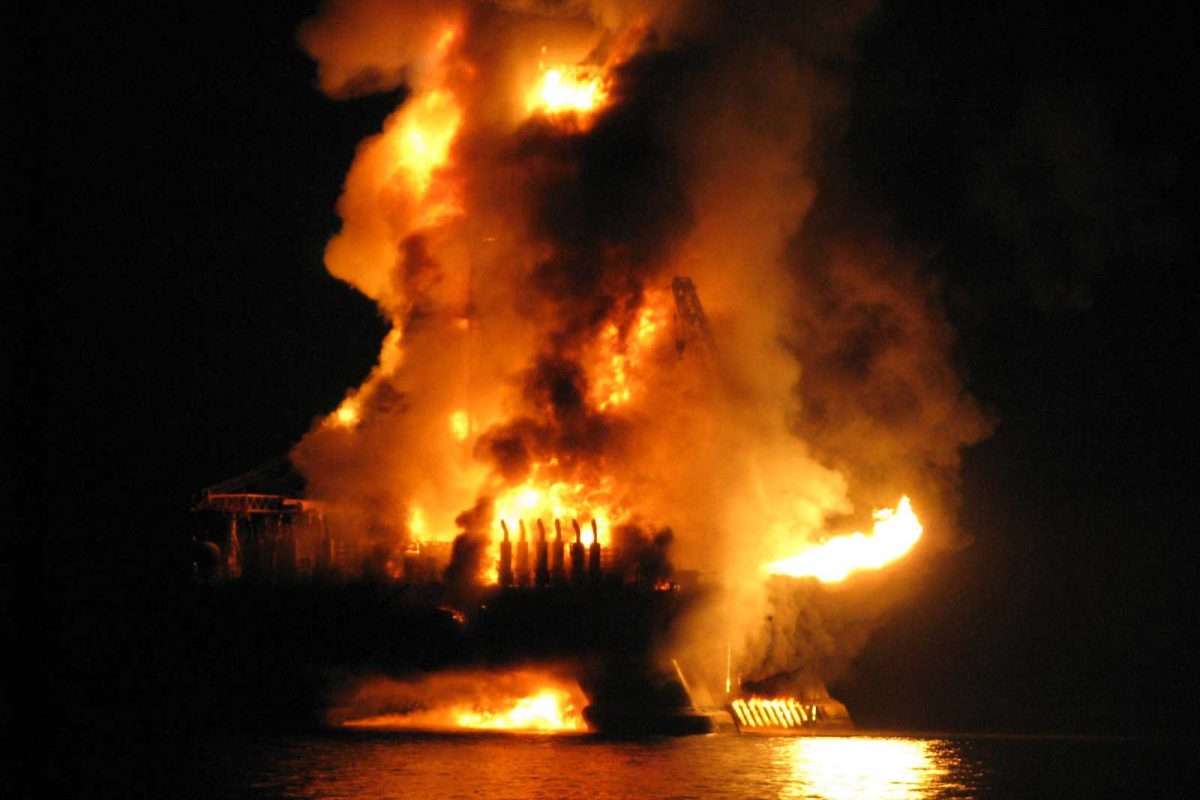
On April 20, 2010, at roughly 7:45 pm Central Daylight Time (CDT), high-pressure methane fume from the well expanded into the marine riser. It further rose into the drilling oil rig. There, it exploded and went up in flames, surrounding the platform.
Eleven workers went missing and were never tracked down. A three-day U.S. Coast Guard (USCG) mission couldn’t find them. They perished in the explosion. Rescue efforts by Helicopters and Lifeboats saved ninety-four crew members. Of these 17 injured received medical care for burns and other wounds. On the morning of April 22, 2010, the Deepwater Horizon sank underwater forever.
How Big Was The Deepwater Horizon Oil Spill?
The oil leak began with a huge oil slick spreading at the rig site. The oil poured for 87 days. BP oil spill initially assessed a flow frequency of 1,000 to 5,000 barrels every day. The Flow Rate Technical Group (FRTG) assessed the early flow rate as 62,000 barrels per day.
Further, the estimated total amount of leaked oil approached 4.9 million barrels including the recovered leakage. As such this made it the world’s biggest accidental oil spill.
Besides, according to satellite images, the spill straightly harmed 70,000 square miles of ocean. The area is almost equal to the size of the State of Oklahoma. By early June 2010, oil had reached up to 125 miles off Louisiana’s shore and along the Alabama, Florida, and Mississippi coasts.
Oil slurry showed up in the Intracoastal waterway. Intracoastal Waterway (ICW) is a 3,000-mile (4,800 km) inland waterway along the Atlantic and Gulf of Mexico coasts of the United States. It also polluted the Gulf Islands National Seashore as well as the Pensacola beach. By the end of June, oil stretched to its earliest arrival in Gulf Park states in Mississippi.
In July 2010, tar balls reached the shores of Lake Pontchartrain and Grand Isle. In September, another wave of spill smeared 16 miles of Louisiana shoreline. It made its way into marshes west of the Mississippi River in Plaquemines Parish. In October, weathered oil made its way to Texas.
By July 2011, the oil had polluted about 491 miles of coast in Florida, Alabama, Mississippi, and Louisiana. Since December 2012, 339 miles of shoreline continued to undergo assessment. And based on the assessments, the response teams acted to coordinate their cleaning projects.
According to a 2015 U.S. Congressional Research Service report, up to 100 million US gallons remained in the Gulf.
Effects of the Deepwater Oil Spill
The deepwater horizon disaster spill zone is home to 8,332 species. It has more than 1,503 crustaceans 1,456 mollusks, 1,270 fish, 604 polychaetas, 218 birds, 29 marine mammal-animals, and a sea turtle.
Between May and June 2010, the spill waters had 40 times more Polycyclic Aromatic Hydrocarbons (PAHs)than before the spill.
PAHs are usually associated with oil spills and contain carcinogens and toxins that pose many health hazards to humans and marine life.
PAHs can damage marine species and microorganisms used to consume the oil can decrease marine oxygen levels. The oil held roughly 40% methane by weight, in comparison to around 5% found in regular oil deposits. Methane could choke marine life and form “dead zones” with low oxygen levels.
National Oceanic and Atmospheric Administration (NOAA) 2014 sponsored a study on the impact of oil spills on bluefin tuna. Stanford University conducted the study. It found that contaminants from oil spills can trigger unbalanced heartbeats. The uneven heart rhythms could result in cardiac arrest in bluefin tuna.
Moreover, the 2014 report termed the spill location as one of the most dynamic ocean ecosystems on the planet. It stated that even low levels of PAH can cause cardiotoxicity in marine life. It was the most common type of damage among a wide variety of species in the oil-affected area.
BP together with USCG and EPA decided to use the oil dispersant, Corexit by subsea injection. Responders deviated from the normal surface application due to the immensity of the pollution. They used the oil dispersant in unprecedented quantities.
The dispersant helps break oil into small droplets following an oil spill. Small droplets are easier to disperse throughout a water volume. They are more readily biodegradable by microbes in the water. Yet, the oil and dispersant mixture infiltrated the food chain via zooplankton.
1. Health Consequences
By June 2010, 143 people had testified for spill exposure incidents to the Louisiana Department of Health and Hospitals. 108 people were workers in the cleaning effort and 35 were local inhabitants.
Some people believe chemicals from the dispersant and oil to be the reason for spill-related health issues. There is also an opinion that the addition of dispersants made the oil more noxious.
Louisiana health community termed the spill as the largest public health disaster from a chemical poisoning in the history of America.
In July 2010, chemical substances showed up in the blood examination of BP cleaning personnel. The inhabitants of Florida, Mississippi, Louisiana, and Alabama, also faced the same contamination. Environmental expert Wilma Subra said that the incidence of these substances in the blood shows exposure. Thus pollution harmed the health of both workers and locals.
Riki Ott, a marine toxicologist with an understanding of the Exxon Valdez oil spill warned families to vacate the Gulf. She said that employees from the Valdez spill had suffered long-term health effects.
A 2012 review of the health effects of the spill on cleanup staff noted eye, nose, and throat irritation. Moreover, there were breathing problems, blood in urine, puke, and rectal hemorrhage along with many other problems.
Dr. James Diaz, from the American Journal of Disaster Medicine, stated the illnesses in the Gulf matched those of oil spills, like the Exxon Valdez. Diaz further considers neurological syndromes are common in such situations.
More than a third of the parents reported physical or mental health symptoms among their children living less than ten miles from shore.
Parents reported mysterious signs among their children, comprising nose bleeds, bleeding ears, and the early commencement of menstruation in girls.
A research studied the health effects amongst children in Florida and Louisiana. In this study:
- More than a third of the parents reported physical or mental health symptoms among their children living less than ten miles from shore.
- Parents reported mysterious signs among their children. These included nose bleeds, bleeding ears, and the early commencement of menstruation in girls.
2. Economy
The spill had a severe economic effect on BP as well as the Gulf Coast’s economic segments such as offshore drilling, fishing, and tourism.
BP’s expenses on the spill comprised several sectors. These included expenditures on the relief effort, well drilling, spill response, and control. Also, there were donations to the Gulf States, claims paid, and state costs as well as penalties and fines.
How Was The Deepwater Oil Spill Cleaned Up?
The major plans for resolving the spill effects were containment, dispersal, and removal. In 2010, 7,000 vessels and almost 47,000 people participated in the mission. As of January 2013, 935 workers were still included.
Containment Booms of over 4,200,000 feet extended on either side to confine the oil. The booms were also used as blockades to safeguard ecologically vulnerable zones. These areas included shrimp/crab/oyster ranches, mangroves, marshes, or other sensitive locations.
Louisiana Barrier Island Plan
The Louisiana Barrier Island Plan attempted to make barrier islands guard the coast of Louisiana. People faulted the plan for its cost and poor outcomes. Critics claim that the judgment to pursue the project was primarily political. It had a minuscule scientific contribution. The EPA voiced unease that the booms would risk wildlife.
In a recall of the technique used in Exon Valdez, a group called Matter of Trust proposed innovative measures. It proposed that unconventional methods could resolve the shortage of industrial oil absorption booms.
The group asked Hair salons, dog groomers, and sheep farmers to give hair, fur, and wool trimmings for filling up stockings and tights. The idea aimed to use them in place of regular booms to assist in containing oil close to affected shores.
The three main methods for eliminating the oil from the water were, burning, offshore purification, and collection for later processing.
The cleanup of the coast became the chief goal of the response action after capping. There were sandy beaches and marshes.
Two key kinds of impacted coast were sandy beaches and marshes.
On beaches, the efforts tried to filter sand, clear tar balls, and excavate tar mats by hand or by using mechanical devices
For marshes, actions included pumping and vacuuming, low-pressure flush, plant cutting, and bioremediation.
Oil-Eating Microbes
Oil dispersants enable the breakdown of the oil by microorganisms. Combining dispersants with oil at the wellhead keeps some oil beneath the surface. Also, the dispersant converts crude oil into small droplets increasing their surface area. The microorganisms then digest the hydrocarbons before they touch the surface.
Yet, one possibility was worrisome. Giving microbes a feast of hydrocarbons could increase their numbers a lot, starving water of oxygen. A surge in microbial activity could shrink subsea oxygen levels, endangering fish and other animals.
The Deepwater Horizon oil spill is no doubt one of the biggest environmental tragedies in American history. It caused a massive amount of oil pollution leading to catastrophic ecological consequences.
